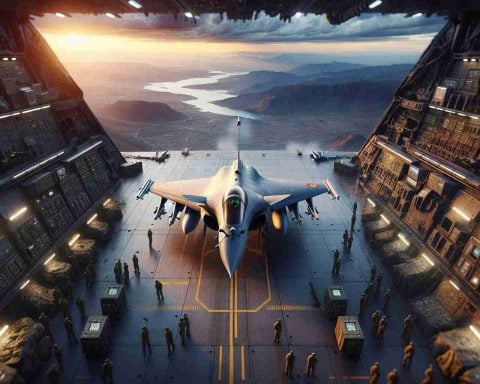The U.S. military is at a crucial juncture as it considers the development of sixth-generation fighter jets. Over the years, the Air Force and Navy have charted distinct paths, reflecting their unique operational priorities: the Air Force with its Next Generation Air Dominance (NGAD) initiative, and the Navy with its upcoming F/A-XX fighter. However, there is growing sentiment, especially from Senator Mark Kelly, that these forces could jointly approach future fighter designs to maximize efficiency and combat readiness.
Revisiting the F-35 Success Story
The Lockheed Martin F-35 Joint Strike Fighter stands as a testament to what’s possible when military branches unite. Despite critics highlighting its compromises, the F-35’s widespread international adoption underscores its viability and adaptability for varied missions. It revolutionized military aviation by offering a stealth mode for initial combats and a “beast mode” for counterattacks once enemy air defenses are neutralized.
The Divergent Paths Ahead
Currently, the Air Force faces a dilemma. Its NGAD project, aimed at replacing the F-22 with advanced manned fighters, has been halted owing to soaring costs and fears of technological obsolescence. Meanwhile, the Navy’s F/A-XX project progresses, aiming to introduce a formidable multirole fighter in the 2030s, which will replace the F/A-18 Super Hornet. Senator Kelly suggests that by learning from the F-35 development, a unified approach could better counter adversary advancements and maintain U.S. air supremacy for the foreseeable future.
Should the Navy and Air Force Join Forces for Next-Gen Fighter Jets?
The U.S. military is at a critical point in its development of sixth-generation fighter jets, with discussions about collaboration between the Air Force and Navy gaining traction. These discussions are driven by the lessons learned from past projects and the pressing need to stay ahead of global adversaries.
Key Considerations for Next-Gen Fighter Jets
1. The Evolution of Military Aviation: The development of the F-35 Joint Strike Fighter by Lockheed Martin is often cited as a success in cross-branch collaboration, despite early criticisms. It showcased the benefits of a unified approach by offering versatile capabilities that serve diverse mission profiles across the Air Force, Navy, and Marine Corps.
2. Distinct Operational Needs: Traditionally, the Air Force has emphasized air superiority and long-range missions, necessitating aircraft like the NGAD (Next Generation Air Dominance) project. In contrast, the Navy’s requirements focus on carrier-based operations and multirole functionality, leading to the F/A-XX initiative. Both projects aim to replace their aging fleets but approach the task with different priorities.
3. Challenges in Joint Development: Historical attempts at unified fighter jet programs have faced challenges due to divergent needs, cost overruns, and technological delays. The NGAD program, for instance, has been halted due to these issues, putting pressure on the military to find a sustainable path forward.
4. Leverage of Technology: Integrating cutting-edge technologies such as artificial intelligence for autonomous capabilities, enhanced stealth, and adaptability is crucial for future aircraft. Collaborative development could streamline these advances across each service branch.
5. International Competitiveness: As potential rivals like China and Russia continue to enhance their own air combat capabilities, the U.S. must ensure its next-gen fighters are superior in both technology and deployment efficiency.
Trends and Predictions
– Increased Budget Scrutiny: With rising defense costs, military branches are under pressure to justify their expenditures, making collaboration an attractive option for cost-sharing and efficiency.
– Technological Convergence: Advancements in AI, machine learning, and quantum computing are expected to drive next-gen fighter capabilities, potentially offering new areas for multi-branch innovation.
– Strategic Alliances: Beyond U.S. borders, allied military forces are likely to show interest in any jointly developed platforms, similar to the international purchase trends for the F-35.
For more information about military innovations and the potential for joint development, visit the Military.com website.
The decisions made regarding the U.S. military’s next-gen fighter jets could shape defense strategy for decades. By drawing on past experiences like the F-35 program, there is potential to enhance combat readiness, improve cost efficiency, and maintain global air superiority.



















